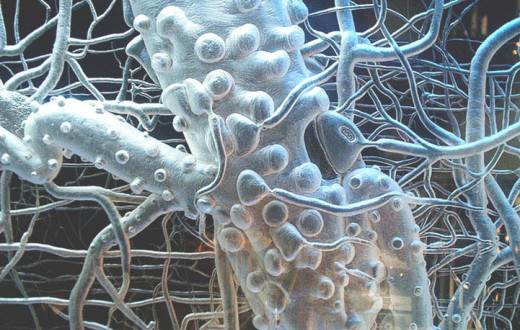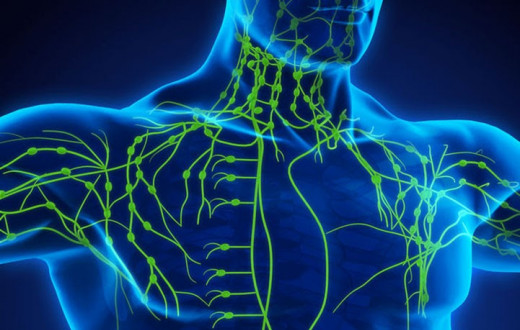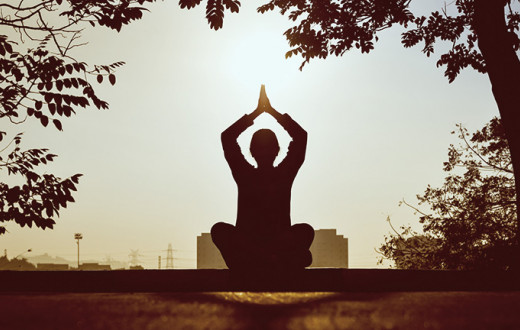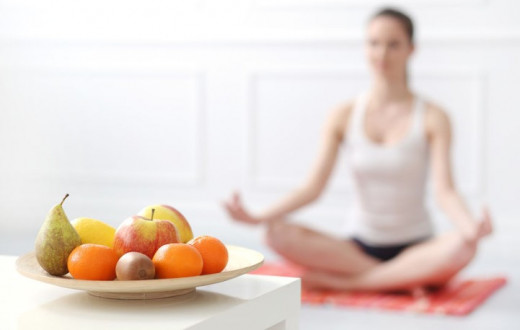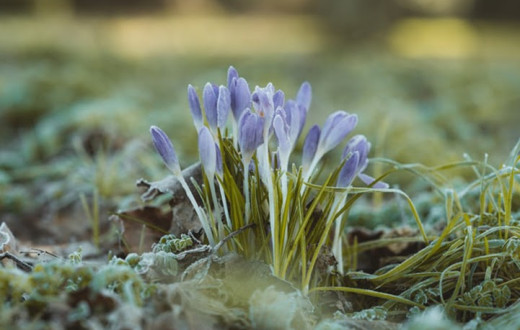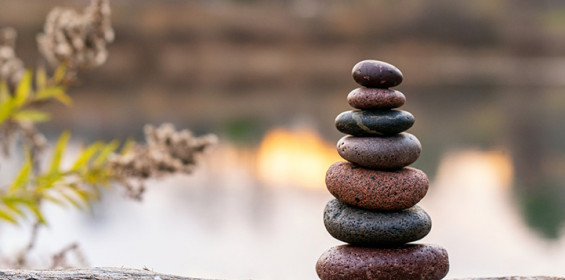By Anuradha Gupta | Posted: September 11, 2019
Fall is the time of year to slow down and fall back! The days are getting shorter, animals are preparing to migrate or hibernate, and trees are shedding leaves. It’s a depleting season; cool, dry, light, windy and rough, and an ideal time to go inwards.
In Ayurveda, as always, we take our cues from nature.
What is Ayurveda?
Ayurveda is the Science of Life, a 5000-year-old system of health and wellness from India that involves holistic healing that is both preventative and treatment-oriented. It is a mind-body-spirit science based on lifestyle, diet, herbs, and therapies like yoga, meditation, abhyanga, marma and panchakarma. Ayurvedic protocols are individualized to every single person.
Ritucharya (the seasonal regimen) is an important concept in Ayurveda, where we alter our lifestyle and diet based on the seasons. Each season brings its own quality that impacts us. It is, after all, natural for us to respond to seasons: for instance, in winter we wear warm clothes, and in the summer we eat cooling foods!
Doshas
Doshas are functional energy principals that are formed from the combination of the five elements and are present everywhere, in both nature and in living beings.
Different seasons are governed by different doshas: for instance, Pitta is dominant in summer.
Dosha | Elements | Energy |
Vata | Air and Ether | Creativity and Movement |
Pitta | Fire and Water | Digestion and Transformation |
Kapha | Earth and Water | Stability and Cohesiveness |
Seasonal transitions
The transitional seasons, fall and spring, are special times to cleanse and prepare for the next season. Fall and Spring are the best time to do Panchakarma, a very deep-seated and comprehensive Ayurvedic purification, detox, and rejuvenation routine.
Fall is a Vata season: it’s getting colder, and the qualities of dryness, constriction, and roughness increase in nature and in our system, too! The efficacy of our immune system reduces, and a detox strengthens us so we can combat colds, allergies, digestive disturbances, and weight gain, all effects characteristic of winter (a Kapha season).
The benefits of cleansing
In the context of our excesses and cleansing, Gurudev Sri Sri Ravi Shankar, jokes, “Your pancreas, abdomen and liver would take your body to labor court if they could.”
According to the Charaka Samhita, an ancient Ayurvedic text, “The imbalances in our mind-body system can be managed and pacified by diet, lifestyle and herbs from time to time, but if you reset the system through periodical cleanses, it will not just help stabilize your health at the time, it can prevent future problems.”
Dr. Jayarajan Kodikannath, a leading Vaidya (physician), explains, “Cleansing helps us get rid of toxins, and in Ayurveda, we define toxins as any material, energy, or principal that disturbs our normal mind-body system; from an unpalatable emotion, to chronic constipation, to harsh chemicals in the environment…”
Indeed, cleansing helps improve health, energy levels, and wellbeing, and aids digestion, elimination, sleep, and weight management. A 2016 Nobel Prizewinning study by Yoshinori Ohsumi on fasting and autophagy corroborates this practice.
Why Fall rejuvenation?
According to Ayurveda, cleansing without replenishment is naturally depleting, and Vata aggravating. In fall, since Vata is already aggravated, the detox part is minimal (just enough as needed by the client) and rejuvenation is the most important part of the routine.
How are Ayurvedic Cleanses Different?
Ayurvedic cleanses are individualized, and done under the guidance of an Ayurvedic professional. They are based on a client’s unique body constitution, or prakriti, ther imbalances, or vikrati, the state of their agni, or their digestive and metabolic fire, and the ama, or toxins, in their body. Prakriti is a combination of the doshas, and doesn’t change. A vikrati can occur in any dosha, and can continue to change throughout a person’s life. For instance, while the Pitta dosha makes a person’s digestion robust, in excess, it can cause hyperacidity.
Ayurvedic cleanses differ from other detoxes in three ways.
1. They are individualized and ideally done under supervision.
2. They involve three stages; preparation (Poorvakarma), the actual/active cleanse (Shodhana) and rejuvenation (Rasayana).
3. They attend to the commonly-ignored aspects of mental health and lifestyle.
Managing Vata imbalance during Fall
For most of us, Vata gets out of whack during the autumn season.
A Vata imbalance can manifest as restlessness, fear, and anxiety, with constipation, bloating, sleep disturbances, vague aches and pains, and in some, allergies. (Also, there is a likelihood of a residual Pitta sharpness and inflammation from the summer that may need to be addressed. A Vata-Pitta imbalance can cause mental and physical burnout, like a forest fire!)
The general recommendations are to balance a Dosha with its opposite qualities. Vata would be balanced by warmth, oiliness, deep nourishment, loving relationships, stability, regular routine, de-stressing, and staying grounded.
A Vata-balancing diet favors dairy, ghee or sesame oil, unctuous foods, sweet, sour, and salty tastes, sweet fruits, fresh dates, soaked nuts and seeds (like pumpkin and sesame seeds) in moderation, warming spices (black pepper, ginger, garam masala, turmeric etc.), smaller lentils like moong (avoid kidney beans and big legumes) and seasonal vegetables like squashes and root vegetables. Avoid raw foods, and stay away from cold, frozen, dry, bitter, pungent and astringent tastes. Drink two glasses of warm water in the morning (with lemon if you can tolerate it, and honey) and sip warm water through the day.
Avoid a juice or raw cleanse, which can aggravate Vata.
This is a good time for Pratyahara, or going inwards. Slow nature walks and gentle, grounding yoga is great. Yoga can involve joint routines, slow, meditative sun salutations, strengthening standing poses, gentle forward bends, inversions (vipritkarni) and Yoga Nidra; Pranyama can involve more Nadi Shodhana (Alternate Nostril Breathing) and Brahmari or Bee Pranayama. Meditation is key! Find out how yoga helps you prepare for the transition in fall here.
A daily self-massage or Abhyanga helps, preferably with sesame oil and grounding aromatherapy with cinnamon, geranium, or lavender.
Shakti Drops (6 drops in a cup of water twice a day) through the year help build immunity, particularly during seasonal transitions when we are prone to allergies.
A Fall cleanse helps balance Vata (if individualized under the supervision of an Ayurvedic Practitioner, it can address all Vikratis).
The keys to an autumn cleanse
While a cleanse is based on everyone’s unique needs, these are general principles and steps.
These recommendations are for a healthy person. Listen to your body. Avoid them if you are pregnant, or have a health condition like diabetes. Menstruating women can suspend the Shodhana; you can continue eating khichdi, but can avoid herbs and abhyanga, because menstruation is nature’s cleanse.
1. Purvakarma: slowly go off processed foods; reduce salt, sugar and caffeine. This could last for 3 days to a week.
2. Shodhana: Mono diet with warm soupy Khichdi (please see recipe below), with added nourishing seasonal soups. Again, this can be done for 3 days to a week.
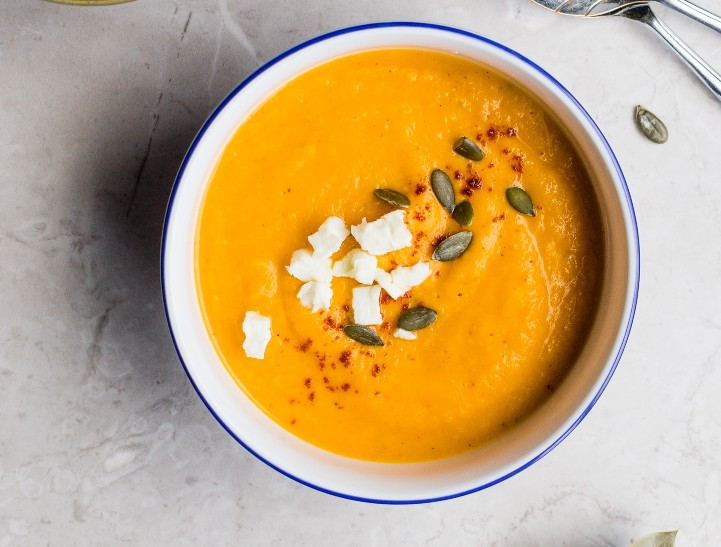
3. Rasayana: Rejuvenation where you slowly transition back to normal food. I would recommend staying with the post-cleanse rejuvenation in fall for at least one month.
Herbal support while cleansing
1. Sip CCF tea (please see recipe below) or Tulsi tea through the day. CCF tea pacifies all doshas.
2. Triphala (avoid if you have any health condition, esp. diarrhea, IBS, or if you are pregnant): Triphala can be taken through the entire cleanse. Start with 1 tablet at bedtime for 3 days with warm water, increase to two tablets for a month, and then taper off. (1 tablet for another month, then alternate days and finally stop).
3. Triphala is a combination of 3 herbs: Vibhitaki, Amlaki, and Haritaki. Here are some tips on modifying the ingredients or adjuvants based on your health:
Ingredients/Imbalance | Pitta imbalance | Vata imbalance (esp. during Fall) | Kapha imbalance |
Amlaki | Add 1/3rd spoon to 1 tsp of Triphala | ||
Haritaki | Add 1/3rd spoon to 1 tsp of Triphala | ||
Vibhitaki | Add 1/3rd spoon to 1 tsp of Triphala | ||
Adjuvants (take with…) | Ghee (1 tsp) | Ghee or Sesame Oil (1tsp) | Honey (1 tsp) |
4. Ritu Haritaki: Vaidya Mamta Gupta recommends an alternative to Triphala: Ritu Haritaki or (Seasonal) Terminalia Chebula (i.e., Haritaki with seasonal Adjuvants for cleansing/rejuvenation; avoid if your digestion is weak or you have a health condition).
It is suggested that with 1 tsp or 2 Haritaki Tablets and warm water in the night, take:
Season | (Or Imbalance) | Adjuvant |
Fall | Vata | ½ tsp Shunthi (Dry Ginger) |
Winter | Kapha | 1/4th tsp Pippali (Piper Longum) |
Spring | Kapha | 1 tsp Honey |
Summer | Pitta | ½ tsp Fresh Jaggery |
(For example, if you have pitta aggravation in the fall you could take Haritaki with fresh jaggery instead of Shunthi).
5. In the Rasayana phase, Chyawanprash is great: many people take a teaspoon of Chyawanprash with warm milk in the morning (or evening as tolerated), through the winter. Warm water is fine if dairy is an issue.
6. A teaspoon of fresh ginger (unless you have hyperacidity) half an hour after lunch helps as Rasayana. Add a pinch of black pepper if you feel allergies coming on.
Unplug and Unwind
An important part of the cleanse is to ensure that you take some time to unplug, do gentle yoga, pranayama, and meditate daily. Take care of yourself! Detox from negativity, inflammatory relationships, or upsetting news.
Attend to yourself as lovingly as if you were your own child. Replenish and emerge renewed!
A simple khichdi recipe
In a half cup of Basmati rice, add a half cup of Moong dal, ½ tsp Turmeric, and Himalayan salt to taste. Add chopped seasonal veggies.
Roast cumin seeds in 1 spoon of Ghee.
Add 6 cups of water. Cook for 45 min (or pressure cook or slow cook based on convenience) till consistency is soft. Garnish with cilantro.
A simple CCF tea recipe
In 6 cups of water, boil 1 tsp of cumin, coriander and fennel. Strain and sip hot/lukewarm.
The Shankara Ayurveda Spa
It’s recommended that any detoxification measures are supervised by an Ayurvedic practitioner. If you want the authentic, supported experience, there’s no better place than the Shankara Ayurveda Spa at the Art of Living Retreat Center in Boone, NC, where you can enjoy individual and personalized treatment, including the entire Panchakarma process. Relax and rejuvenate yourself at a beautiful getaway nestled in the beautiful Blue Ridge Mountains! Spots often fill quickly, so make sure to reserve yours soon!
Anuradha Gupta is an Engineer, MBA and Ayurvedic Wellness Counselor. She has a corporate background and volunteers for Art of Living and other nonprofits. You can find her on Facebook or on LinkedIn.



